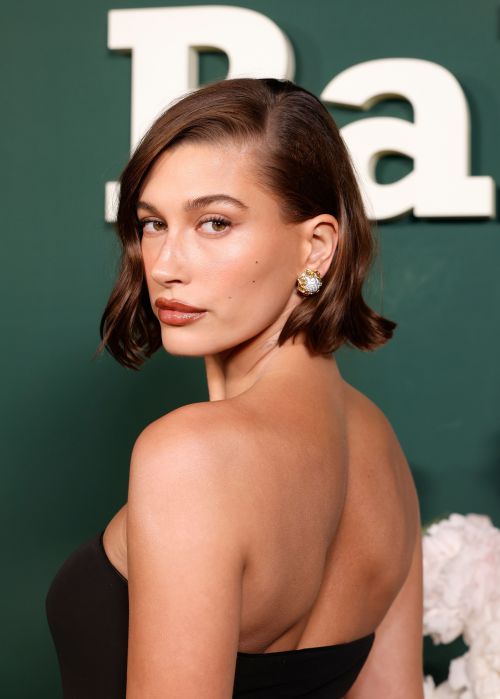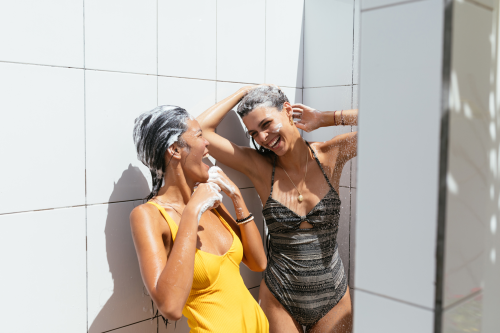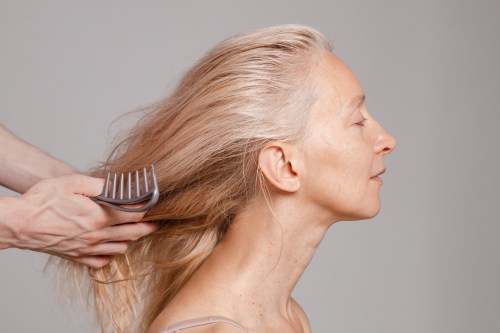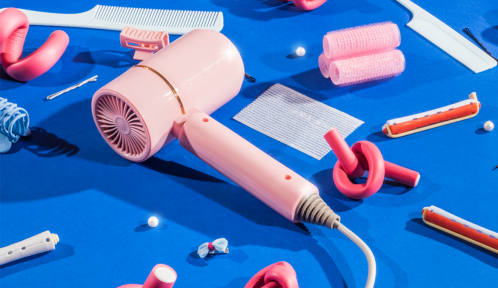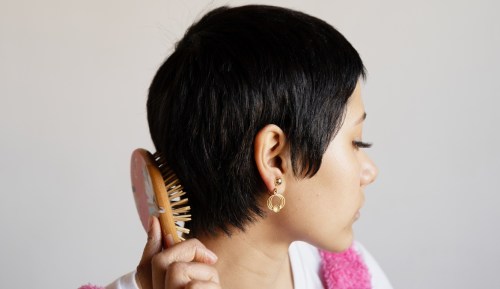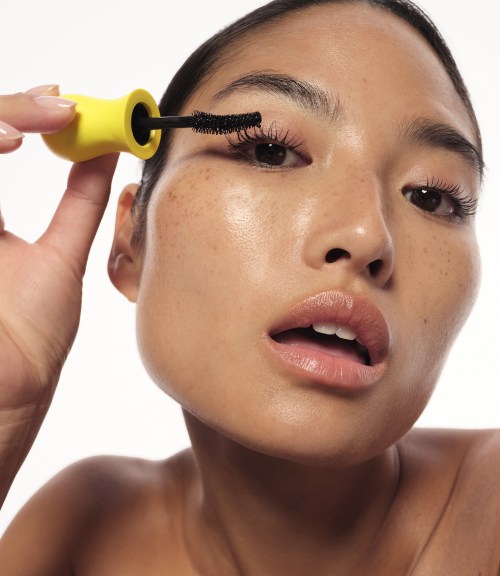Our editors independently select these products. Making a purchase through our links may earn Well+Good a commission
Doing my own cornrows has been one of the most elusive parts of going natural. I always wear my hair in protective styles, mostly with my hair cornrowed down under a wig. The art of a cornrow is difficult enough, but learning how to cornrow your own hair can feel next impossible. I asked Stasha Harris, a hairdresser with almost 20 years of experience and owner of Magic Fingers Studio in Brooklyn, to help me break it all down.
Experts in This Article
hairdresser and owner of Magic Fingers Studio
You don’t have to be a professional braider to get neat cornrows. With the right tools, products, and a bit of patience, putting your own hair in cornrows will become second nature.
How to cornrow your own hair, step-by-step
1. Start on clean, detangled hair
You’ll want to start this process on clean hair, especially if you plan to leave these braids in for a few weeks, So start by shampooing, conditioning, and detangling your hair. Make sure you detangle thoroughly—trying to braid knotty hair will make the process 10 times harder. To get through my 4C curls with ease, I turn to the Kazmaleje Curlplus Paddle Brush ($22).
“If you didn’t detangle your hair properly while you’re braiding, your hair is going to start knotting,” says Harris. “And while you’re braiding, you also have to pull your hands all the way through. Each time you pick up hair, you have to make sure you pass your hand all the way through to section, so you’re pretty much untangling as you braid.” If you don’t pull your hand through each time you pick up hair, you could accidentally be creating a braid at the bottom of your hair as you go.
2. Consider whether to keep your hair curly or to blow it out
Next, you can choose to either keep your hair wet and in its natural state or blow it out.
“I usually use a blow dryer and dry the hair just to get it to stretch a bit. It’s not required, however,” says Harris. “I usually use the comb attachment so the heat isn’t going directly on the hair so there’s that separation.”
I’ve tried doing cornrows on both wet and dry hair and though I love the idea of keeping my hair wet and avoiding heat damage, braiding blown-out hair is much more manageable. It’s much less voluminous—meaning I can get smaller, neater braids with far less skill. I like using the Briogeo Blow Dry Perfection and Heat Protectant Crème ($24) to protect my hair during this step.
If you choose to keep your hair wet, make sure you have time after the braids are done to let them fully dry before covering them with a wig or a hat. “You don’t want it to smell moldy,” says Harris.
3. Make clean sections
“When I’m teaching students and let’s say they want to learn how to do six corn braids, one of the major issues they bump into is sectioning,” says Harris.
To get precise sections, you’ll need a rat tail comb ($4). Harris says to start by parting the hair into four sections “so straight down the middle and then across.” This way, you have less hair to work with at a time. Start your part in the front section of your hair. Then continue from the line you made through the bottom section. “A lot of times your hand moves, it shifts, you don’t have enough space in the back to fit all your braids,” says Harris. “So it definitely helps to part in sections.”
4. Add moisture as you cornrow and keep your fingers close
Harris says one of the biggest mistakes she sees people make is braiding without or with very little hair product. When you do this, your braids can end up frizzy and dry. Start with a gel like the Shine ‘n Jam Magic Fingers Gel ($12). This conditioning gel helps to keep your hair moisturized while eliminating flyaways. Pick up a bit of the gel with your fingertips and work it through the section you’re working on as you’re braiding.
For close and neat braids, Harris says to pay special attention to finger placement and the amount of hair you pick up.
“It’s very important that you keep your fingers on the scalp and very close together,” says Harris. “While you’re braiding, you must have that anchor finger where it’s pushing backward to make sure that braid is not becoming loose while you braid.” And when you pick up too much hair at a time, you aren’t able to get a smooth braid. “So you have to pick up a little bit of hair at a time.”
If you’re more of a visual learner, watch the video by Kelechi Mgbemena to learn how to cornrow your own hair:
5. Add shine and lock in any flyaways
Once you’re done braiding, she says to add oil to the braids for added moisture and shine. Harris likes the Ampro Vitamin E Oil ($10). Vitamin E oil encourages hair growth and health. To keep them looking even neater, finish up with the Shine ‘n Jam Magic Fingers Setting Mousse ($7). Put the mousse all over and then tie a durag over your hair to seal down any flyaways down. “You can walk around the house and have it air dry, or you could use a handheld dryer and just run it over to durag for a minute or two, and that is going to help all the flyaways to lay down,” says Harris.
6. Don’t leave your cornrows in for too long
It can be tempting to leave your braids in for over a month, especially if the braiding process took you way longer than you’d like. But, Harris says to take your braids out after two to three weeks. Any longer, and your braids won’t lay as flat or look as neat as your hair grows and your braids experience normal wear and tear like tossing and turning at night. Plus, your scalp will be begging for a thorough cleaning, something that’s hard to achieve with braids in.
Oh hi! You look like someone who loves free workouts, discounts for cult-fave wellness brands, and exclusive Well+Good content. Sign up for Well+, our online community of wellness insiders, and unlock your rewards instantly.
Sign Up for Our Daily Newsletter
Get all the latest in wellness, trends, food, fitness, beauty, and more delivered right to your inbox.
Got it, you've been added to our email list.

